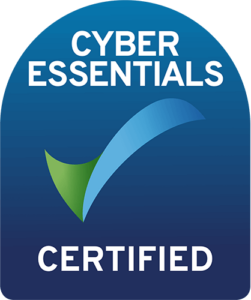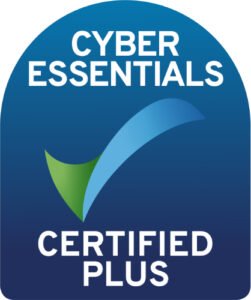Thinc insights
Sage are the experts in accounting software, but what is Sage 200? Is it an ERP system – and what does this mean?
Sage is a name synonymous with accounting – whether it’s Sage 50 for small businesses or Sage Intacct for those that are growing. So, what is Sage 200? And does it provide ERP capabilities?
You may have come across Sage software when looking at what technology can support your business’ accounting function. If you’re in need of solutions that go beyond accounting, then you may have also seen the term ‘Enterprise Resource Planning’, commonly known as ERP.
This raises the question, does Sage offer an ERP? The answer is yes, and it’s called Sage 200.
This blog will provide you with an explanation of what an ERP system is, how it differs from just accounting software (they’re often thrown into the same conversation), before exploring the ERP features of Sage 200.
We’ll then take you through all the ways in which Sage 200, as a best-in-class ERP system designed for small and medium-sized enterprises, can help your business’ departments achieve more.
An ERP is a software system that includes all the tools and processes required to run operations for a successful company, from accounting and purchasing, to sales and strategy. The goal of a good ERP system and its implementation is to streamline all core activities by bringing them together into one single integrated system.
It’s designed to ensure better flow of data across departments, giving decision-makers and their teams much better visibility and control over their day-to-day.
While there is a slight overlap in terms of features, ERP and accounting software serve different overall purposes, and they vary in scope, functionality and integration.
Regular accounting software is designed specifically for accounting activities. It makes core financial management tasks easier, such as bookkeeping, expense tracking and cashflow, tax calculations, generating financial statements and payrolls.
While this is great for finance, it doesn’t really extend to other areas of the business, like sales or inventory management. ERPs, however, connect different departments and join up workflows across the entire business.
This integration is probably the biggest differentiator. Traditional accounting software usually stands alone and doesn’t really talk to other departments automatically; you’d need to manually transfer any information across to other parts of the business. An ERP would link finance with sales, procurement and inventory.
Integration like this also enables business-wide reporting. While financial software will be perfect for financial reports like profit and loss statements or balance sheets, an ERP can provide a holistic view of the business.
Scalability is another difference to take into account. ERP systems offer potential for right-sizing and customisation, where the system can be tailored to match exact needs as a business grows. This isn’t the case with many accounting software tools designed for small businesses, which tend to be more limited in functionality and scalability.
Finally, there’s the cost. ERP systems can be more expensive given their greater functionality, flexibility and overall broader value to the business. Standard accounting software is cheaper, with less time taken to implement, but it’ll only really serve the finance business function, and won’t grow with you.
Think of an ERP as an entire control panel, while accounting software would be something like a fuel gauge – it keeps track of just one vital component.
There are a number of things that Sage 200 ERP software does that define it as this type of solution. It provides a holistic view that goes above and beyond tools for accounting and finance. Let’s take a further look.
To start, it’s cross-departmental. Yes, it can help with cashflow monitoring and accounts payable, but it also integrates these functions with other key business areas. It can help track stock levels, while also monitoring project progress. It’s a sales, customer, inventory, finance and project management tool all in one, and offers more potential for end-to-end process automation to help you streamline common tasks.
Another key characteristic that Sage 200 ERP software has is its ability to provide real-time data for reporting in one single unified view. What makes this a powerful component is that you no longer need to manage separate disconnected systems across departments – it’s all in one place.
In a similar light, consider Sage 200’s integration with third-party systems. Sage 200 is built with third-party integration in mind. It can integrate with anything from e-commerce platforms, payroll systems, the Microsoft 365 suite and warehouse management tools. It’s all built with a view of breaking down data and system silos and encouraging a unified system.
Sage 200 is highly customisable and scalable, suiting the specific needs of a business. Looking to grow? Is one particular department expanding? Specific tools and bolt-ons can be added or taken away in an all-encompassing platform for business management.
Sage 200 provides a wide range of benefits across different areas of a business, from streamlining operations to improving efficiency. Let’s explore the impacts that it could have on the different parts of an organisation.
The unified data in Sage 200 helps sales teams to understand customer needs better, track orders more efficiently and explore order histories in depth. This allows for more informed recommendations, not just for the customer, but also for internal teams.
Routine tasks can be automated, meaning there’s more time for the customer. Sage 200 allows a sales team to manage leads and track customer interactions better, making for more accurate reporting. Sales orders are automatically processed, meaning deals can be closed faster.
With addons, it becomes possible to unify sales, marketing and customer service data in one place. This means you can say goodbye to working off multiple ineffective systems and spreadsheets, as Sage 200 hosts all that information.
Sales can track customer data more efficiently; marketing can understand lead progress with ease and services will have all the order information to work with at the click of a button.
With Sage 200, real-time visibility stock levels can be monitored, helping to reduce the stresses of inventory management. Features like automated reordering is just one nifty mechanic that gives its users more optimised stock control. All components of the supply chain can be integrated, as purchase orders become easier to track.
Warehouse operations can also be streamlined through addons and system integrations, with automated functionality for picking, packing, stock allocations and shipping processes.
With the addition of a manufacturing module, Sage 200 ERP makes overhead tracking possible. With a clear view of production cycles, efficiency and waste you can continuously add value at each stage of the manufacturing process.
Project accounting is available with Sage 200 as an out of the box solution. It can support you with tracking your project’s costs as you go. It allows for running detailed enquiries on all aspects of your projects and bills for your project customers can be generated with ease.
With Sicon Projects, a module for Sage 200, project progress can be tracked at every stage, managed in real-time, reflecting changes to resources and budgets. All of this is designed to ensure projects meet deadlines as a result of benefiting from the integration possibilities that come with Sage 200 ERP.
Sage 200 gives the option of a web-based interface, so it’s possible to manage a business remotely and allow employees to work from anywhere with full access to the data they require day-to-day. Sage 200 integrates with other systems to improve collaboration, with less infrastructural complexity.
At a high level, a business can benefit from Sage 200 ERP’s advanced reporting tools, with reports across every business function easily generated. Data-driven decision making is made more readily available due to increased visibility and cross-departmental real-time updates. There’s the option of personalised dashboards, drawing on data from across the business – allowing leaders to focus on the key areas when and where needed.
Sage 200 as a leading ERP system allows for increased efficiency, improved collaboration and the right infrastructure for scalability. As a business grows, Sage 200 can scale with ease to match increased demand and headcount. New modules and users can be added, with automated processes across all departments, leading to greater output and productivity.
Sage 200 ERP software helps you to work hard and smart, leading to greater output than having multiple systems.
At Thinc, we’ve been helping SMEs unlock their potential with leading ERP software for three decades – we’re here to guide you on whether Sage 200 is right for you and how you can get the most value from your investment. If you find that you still have questions about which approach would best work for your business, we’re happy to advise.
For more information on Sage 200 ERP, get in touch.
Related Topics
Looking to explore Sage 200 as an ERP?


Enter your details into the contact form below, and one of our experts will be in touch to arrange a time to speak.
If you’re an existing customer looking for support, please e-mail servicedesk@wearethinc.com, or visit our support page where you can download our remote support apps.